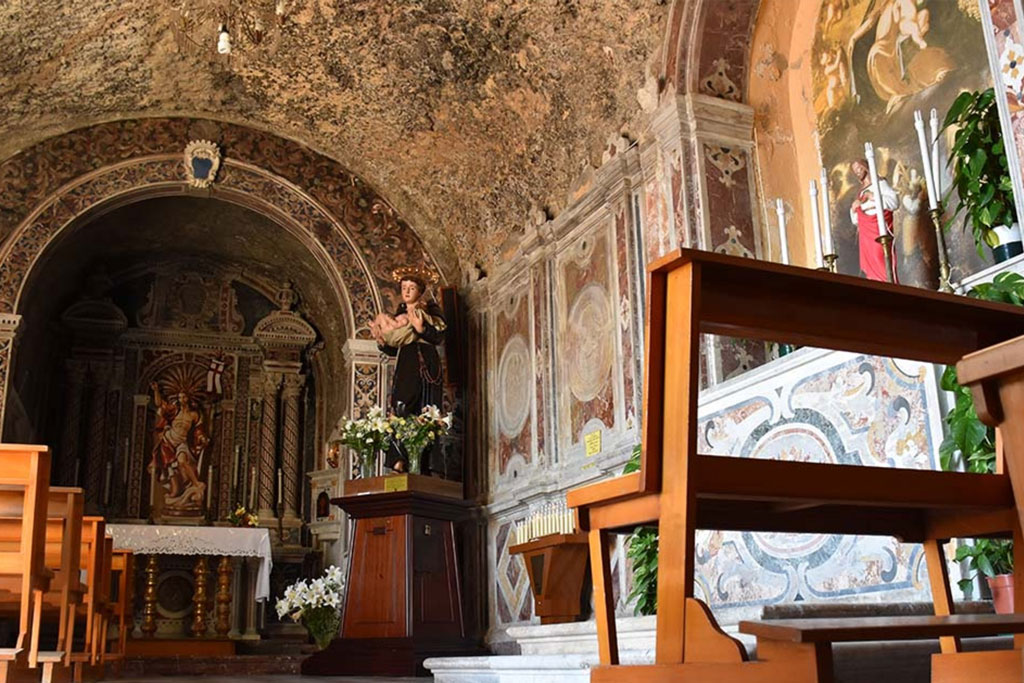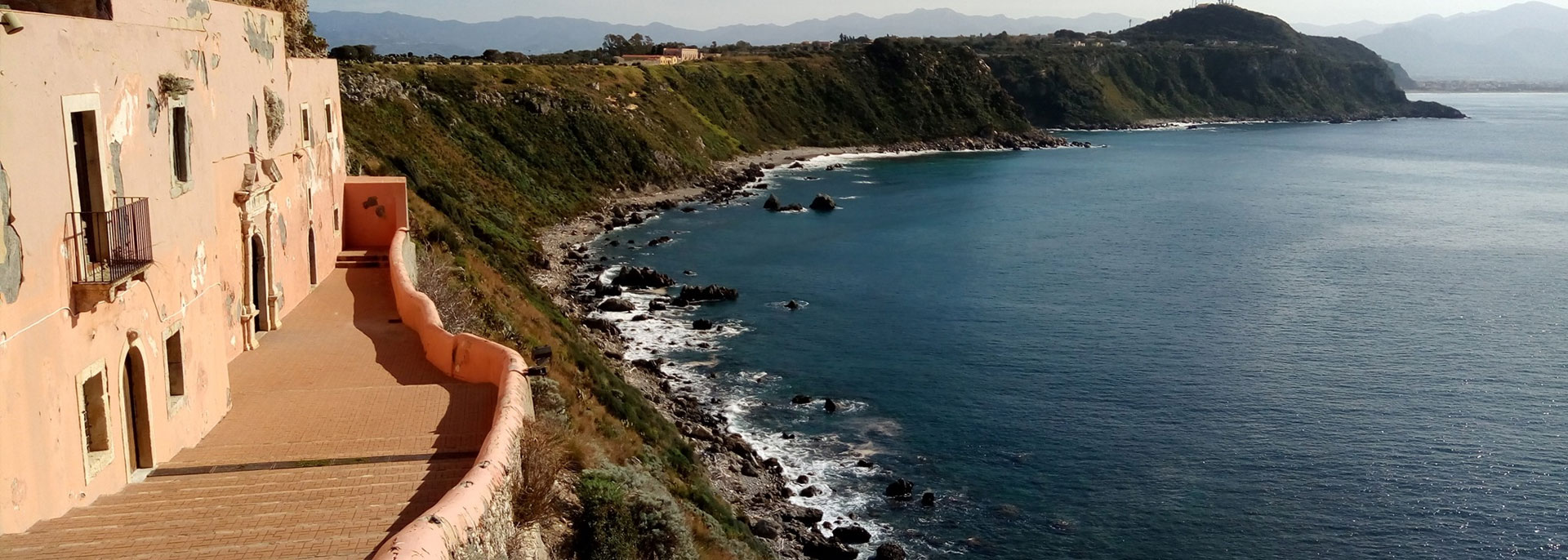The sanctuary entirely carved in stone, according to popular folklore, was a refugee of the saint, then a Portuguese missionary named Fernando Martins de Bulhões, whose ship had been rerouted by a violent storm during a trip to his native Lisbon in 1221.
After his death in 1231 and his canonisation in 1232, the cave was transformed first into a place of prayer and then a sanctuary after various structural interventions in 1575, 1737, and 1783.

[The Sanctuary]
Saint Anthony of Padua
The tiny aisle-less church with a bell gable atop has a simplistic, classic style arch entranceway from 1699 which is located adjacent to a small alcove
containing a polychrome statue of the saint himself. The sanctuaries carved wooden doors date back to 1737. The main altar was constructed in 1699, while the new side altar of Our Lady of Providence, along with the pavement were constructed in 1737. The wooden statue of the saint sculpted by Noè Marullo, an artist from Palermo, replaced the sixteenth-century one that was destroyed by a fire. The side walls are lined with marble slabs with sculptural reliefs depicting the saint's miracles. The archway leading to the main altar is decorated beautifully with polychrome marble. In a small room to the
right of the altar, carved completely into the rock is the ancient location of prayer of Saint Anthony.

ADDRESS
The Sanctuary of Saint Anthony of Padua Capo Milazzo, Milazzo (ME)







